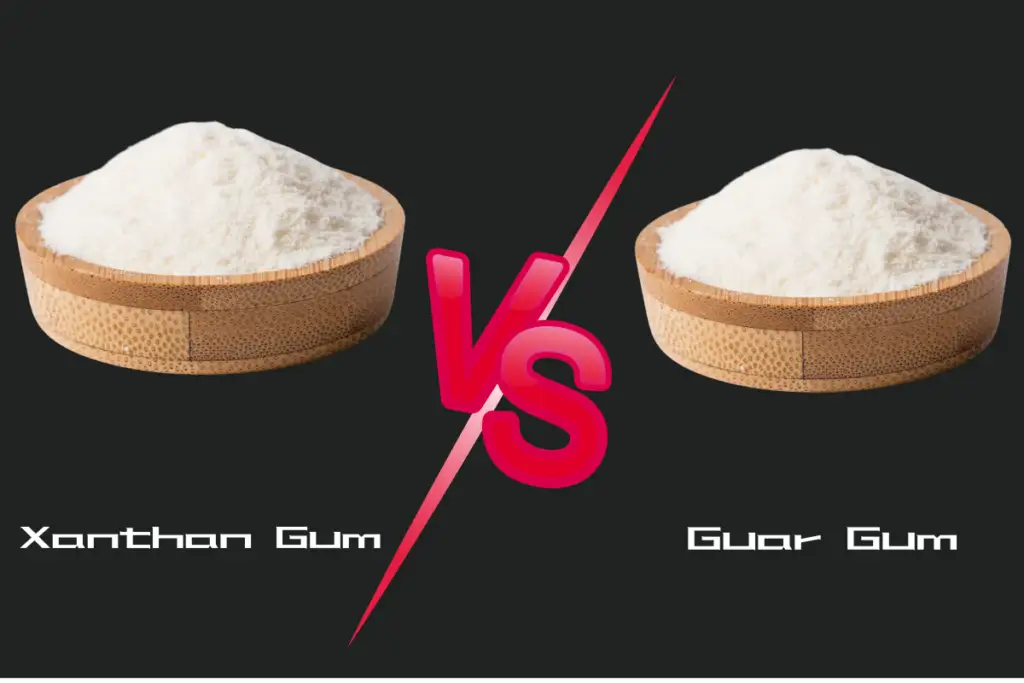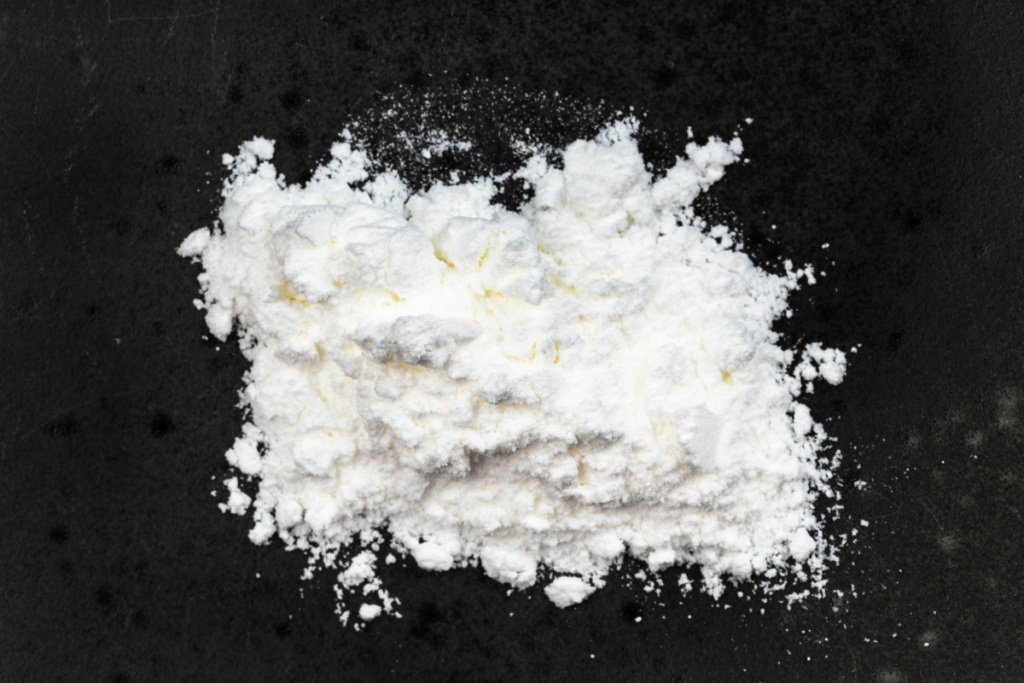Guar gum and xanthan gum are two polysaccharides widely used as additives in a variety of food and industrial products due to their excellent thickening and stabilizing properties. Derived from natural sources, each of these gums has unique characteristics that make them suitable for specific applications, impacting texture, consistency, and shelf life of products.
Guar Gum: Extracted from the seeds of the guar plant, Cyamopsis tetragonoloba, guar gum is a galactomannan type polysaccharide. It is primarily grown in India and Pakistan, with India being the largest producer. Guar gum is celebrated for its ability to improve the texture and shelf stability of food products and is also utilized in industries such as pharmaceuticals, cosmetics, and oil drilling for its viscosity and thickening properties.
Xanthan Gum: This gum is a microbial polysaccharide produced through fermentation by the bacterium Xanthomonas campestris. It is highly versatile and can be used across a broad range of pH levels and temperatures, making it particularly valuable in food processing as well as in oil drilling where high heat and pH stability are required.
The importance of these gums cannot be overstated, especially in their roles as emulsifiers, stabilizers, and thickening agents. They help maintain the quality and consistency of sauces and dressings, improve the freeze-thaw stability of frozen products, and enhance the mouthfeel of beverages and dairy products.
The purpose of this article is to delve deep into the characteristics of guar gum and xanthan gum, highlighting their similarities and differences. By comparing their chemical properties, applications, and the impact they have on the food and industrial sectors, this article aims to provide a comprehensive understanding of these critical ingredients, assisting manufacturers and consumers in making informed decisions based on their specific needs.
Historical Context and Production
Origin and Historical Use of Guar Gum and Xanthan Gum
Guar Gum: The guar plant, from which guar gum is derived, has been cultivated for centuries in India and Pakistan, primarily for human and animal consumption. The use of guar gum in commercial applications, however, began to expand significantly during the 20th century, particularly after World War II, when it became a valuable commodity in the food and industrial sectors. Its ability to act as a thickener and stabilizer made it a crucial ingredient in a growing number of processed foods and non-food products, such as in hydraulic fracturing in the oil industry.
Xanthan Gum: Unlike guar gum, xanthan gum does not have a long historical use. It was discovered in the 1960s by researchers at the United States Department of Agriculture (USDA) who were seeking new microbial polysaccharides that could be used in food and other industries. Due to its superior thickening and stabilizing properties, as well as its ability to withstand different temperatures and pH levels, xanthan gum quickly became a staple in various sectors following its commercial introduction.
Production and Sourcing
Guar Gum: Guar gum is extracted from the endosperm of the seeds of the guar plant. The process involves removing the husk from the seeds, hydrating them to enable the splitting of the endosperm, and then grinding the hydrated endosperm into a fine powder. The primary source of guar gum is India, which accounts for nearly 80% of global production, followed by Pakistan. The crop is dependent on seasonal monsoon rains, and thus its price and availability can be highly volatile.
Xanthan Gum: The production of xanthan gum is achieved through a fermentation process. The bacterium Xanthomonas campestris is cultured in a nutrient-rich medium, typically containing carbohydrates such as glucose, sucrose, or lactose, which the bacteria ferment to produce the gum. The resulting mixture is then precipitated with isopropyl alcohol, dried, and milled into a fine powder. This production process allows for greater control over the supply and quality of xanthan gum compared to agricultural commodities like guar gum.
Both guar gum and xanthan gum have evolved to become fundamental components in various applications due to their versatile properties. Their production methods reflect the balance between traditional agricultural practices and modern biotechnological advances, catering to the demands of both food and industrial markets globally.

Chemical Properties
Basic Chemical Structure and Properties of Guar Gum and Xanthan Gum
Guar Gum: Chemically, guar gum is a polysaccharide composed of the sugars galactose and mannose. The structure of guar gum is a linear chain of β 1,4-linked mannose residues to which galactose residues are 1,6-linked at every second mannose, forming short side-branches. Guar gum is highly soluble in cold water and forms a viscous solution at low concentrations, which makes it an effective thickening agent.
Xanthan Gum: Xanthan gum is a complex exopolysaccharide produced by the bacterial fermentation of sugars. It consists of a cellulose backbone with trisaccharide side chains that may contain mannose, glucuronic acid, and glucose. These side chains are responsible for the gum’s ability to hold water and form highly viscous solutions even at low concentrations. Xanthan gum is unique because it is resistant to temperature variations, enzymatic degradation, and changes in pH.
How These Properties Influence Their Behavior in Solutions
Guar Gum: The thickening power of guar gum comes from its ability to form hydrogen bonds with water molecules, significantly increasing the viscosity of the solution. This property is particularly useful in foods and beverages, where it acts as a stabilizer and prevents the formation of ice crystals in frozen products. Guar gum’s water-binding capacity also makes it useful in pharmaceuticals as a binder and disintegrant in tablets.
Xanthan Gum: The rheological properties of xanthan gum are exceptional. In solution, xanthan gum exhibits pseudoplasticity (shear thinning behavior), which means it becomes less viscous under shear stress and returns to its original viscosity once the stress is removed. This is advantageous in applications such as salad dressings or sauces, which need to pour easily yet maintain a good cling to the food. Additionally, xanthan gum’s stability under a wide range of temperatures and pH levels makes it ideal for products that undergo pasteurization and sterilization processes.
Both gums interact differently with water and other components in a mixture, affecting everything from texture to stability. The ability of guar gum to hydrate rapidly in cold water without the need for heating makes it very useful in industrial applications where rapid hydration is necessary. In contrast, xanthan gum’s robustness under various environmental conditions makes it indispensable in many complex formulations where processing involves extreme conditions.
The understanding of these chemical properties and their implications allows food scientists and industrial formulators to select the appropriate gum for their specific needs, optimizing product performance and consumer satisfaction.
Functional Differences in Food
Role of Each Gum in Food Applications
Guar Gum: Guar gum primarily acts as a thickening and stabilizing agent in food products. Its ability to quickly dissolve in cold water makes it particularly useful for cold preparations. Guar gum is also a good emulsifier, helping to keep ingredients mixed without separating, and it can improve the texture and shelf life of baked goods by enhancing dough yield and retaining moisture.
Xanthan Gum: Xanthan gum is valued for its exceptional ability to stabilize and thicken, even at low concentrations. It provides a “slippery” texture to liquids, which is desirable in many sauces and dressings. Xanthan gum’s pseudoplastic properties make it excellent for products that require a certain viscosity when resting but need to flow easily when stirred or poured. Additionally, xanthan gum is used to create gluten-free products, as it can mimic the gluten’s properties in baking, providing elasticity and stickiness to doughs.
Examples of Typical Food Products
Guar Gum:
- Ice Cream: Guar gum prevents ice crystals from forming, ensuring a smooth and creamy texture.
- Baked Goods: It is used in bread, pastries, and cakes to increase dough yield, improve texture, and extend shelf life.
- Dairy Products: In yogurts and cheeses, guar gum helps maintain homogeneity and texture by preventing the separation of ingredients.
- Beverages: Guar gum is added to beverages to improve mouthfeel and maintain suspension of mixed ingredients.
Xanthan Gum:
- Salad Dressings: The shear-thinning nature of xanthan gum allows dressings to pour easily yet cling to salad components.
- Sauces and Gravies: Xanthan gum provides a stable consistency, preventing the separation of the sauce ingredients.
- Gluten-Free Baked Products: It is essential in gluten-free baking, where it provides the stickiness that gluten would normally contribute, aiding in texture and moisture retention.
- Soups: Used to thicken soups without altering the flavor, providing a more substantial mouthfeel.
Performance in High and Low Temperature
How Guar Gum and Xanthan Gum Perform Under Various Temperature Conditions
Guar Gum: Guar gum is relatively stable in both high and low temperatures, making it versatile for various food and industrial applications. However, its solubility and viscosity can be affected by extreme temperatures:
- Low Temperatures: Guar gum performs well under low temperatures, maintaining its thickening properties. This characteristic makes it especially useful in frozen foods where it helps to control ice crystal growth, ensuring a smoother texture.
- High Temperatures: While guar gum is generally stable at high temperatures, prolonged exposure can cause a reduction in its thickening ability. In cooking processes like canning or pasteurization, guar gum can still maintain a stable viscosity and act as an effective thickener.
Xanthan Gum: Xanthan gum is renowned for its exceptional temperature stability:
- Low Temperatures: Xanthan gum maintains its viscosity and does not react adversely to cold. It is effective in frozen products, contributing to a consistent texture without syneresis (water leakage) when thawed.
- High Temperatures: Xanthan gum’s viscosity remains stable even at high temperatures, making it ideal for foods that undergo sterilization or high-heat processing. Its stability in varying pH levels and temperatures makes it a preferred choice in many commercial sauces and dressings that require cooking.
Impact on Texture and Consistency in Foods and Industrial Products
Guar Gum: In foods, guar gum enhances texture by providing a creamy mouthfeel in dairy products and adding volume and moisture retention in baked goods. In industrial applications, such as in cosmetics or pharmaceuticals, guar gum acts as a binder and disintegrant, improving the consistency and shelf life of products.
Xanthan Gum: The ability of xanthan gum to form gels and stabilize emulsions affects both food and non-food products. In foods, it ensures even suspension of solids and stabilizes emulsions to prevent separation, enhancing the texture and mouthfeel of sauces and dressings. Xanthan gum is also used in gluten-free baking to replace the elasticity and texture provided by gluten. In industrial applications, its thermal stability is exploited in products that must withstand varying temperatures during processing and storage, such as paints and adhesives.
Overall, the performance of guar gum and xanthan gum under different temperatures influences their application not just in culinary contexts but also across various industries. Their ability to maintain consistency, stabilize, and modify textures under thermal stress makes them indispensable in many formulations.
Health and Nutritional Aspects
Dietary Considerations, Including Potential Allergens and Health Benefits
Guar Gum: Guar gum is generally considered safe and is used as a dietary fiber in various foods. It has been found to be beneficial for digestive health, helping to regulate bowel movements and potentially aiding in cholesterol reduction. However, some people may experience mild digestive symptoms, such as bloating or gas, especially when consumed in large amounts. While rare, there are also instances where individuals may show allergic reactions to guar gum, particularly those who are sensitive to legumes, as guar is a type of legume.
Xanthan Gum: Similarly, xanthan gum is recognized for its role as a soluble fiber in the diet, which can help to stabilize blood sugar levels and promote a healthy gut. It is also used to improve texture and consistency in foods tailored for specific dietary needs, such as gluten-free or low-fat diets. Allergic reactions to xanthan gum are uncommon, but it can cause digestive issues if consumed in excessive quantities. As with guar gum, those with severe wheat, corn, soy, or dairy allergies should be cautious, as the substrate used for fermenting Xanthomonas campestris could be derived from these sources.
Regulatory Status and Safety Profiles in the US and Internationally
Guar Gum: In the United States, guar gum is recognized as safe by the Food and Drug Administration (FDA) when used in accordance with good manufacturing practices. It is approved for use as a food additive for its emulsifying, thickening, and stabilizing properties. Internationally, guar gum also enjoys a generally favorable safety status and is approved for use in many countries subject to similar regulatory standards as in the US.
Xanthan Gum: Xanthan gum is also recognized as safe by the FDA, with specified limits on its use in different food categories. It has gained acceptance for use in both food and non-food products globally, meeting the safety requirements of the European Food Safety Authority (EFSA), and is listed in the Codex Alimentarius, which standardizes food safety guidelines internationally.
The safety and regulatory acceptance of both guar gum and xanthan gum underscore their importance not just as food additives but also as components beneficial to health. Nevertheless, as with all food additives, it is essential for manufacturers to adhere to regulatory guidelines and for consumers to be aware of any personal sensitivities to these substances.
Industrial Applications Beyond Food
Use of Guar Gum and Xanthan Gum in Pharmaceuticals, Cosmetics, and Oil Drilling
Guar Gum:
- Pharmaceuticals: Guar gum is employed as a binder and disintegrant in tablet formulations, helping to ensure that tablets break down appropriately in the digestive system. It is also used in the manufacture of hydrogels, which are utilized in drug delivery systems.
- Cosmetics: In cosmetic products, guar gum acts as a thickener and stabilizer in lotions, creams, and shampoos. It helps maintain a smooth texture and enables even distribution of product when applied.
- Oil Drilling: Guar gum is crucial in the hydraulic fracturing (fracking) process, where it is used to thicken water that carries sand into the fractures in rock. This application takes advantage of guar gum’s ability to withstand high pressures and temperatures, enhancing the extraction efficiency of oil and gas.
Xanthan Gum:
- Pharmaceuticals: Xanthan gum is used in a variety of drug formulations to stabilize suspensions and emulsions, ensuring that active ingredients remain uniformly dispersed. It is also utilized in controlled-release drug delivery systems.
- Cosmetics: Due to its excellent stability under a range of conditions, xanthan gum is used to improve the texture and feel of beauty products, including lotions and gels, ensuring that they retain a consistent viscosity.
- Oil Drilling: Similar to guar gum, xanthan gum is used in drilling muds to lubricate and cool the drill heads and to carry the solids out of the well, which is essential for efficient drilling operations.
Specific Benefits and Challenges in These Applications
Benefits:
- Guar Gum and Xanthan Gum: Both gums provide viscosity management, stabilization, and emulsification, which are beneficial across various industries. Their natural origin also makes them more desirable in applications where synthetic additives might be restricted or less favored.
Challenges:
- Guar Gum: The supply of guar gum can be somewhat volatile due to its dependency on agricultural yield, which is influenced by weather conditions in major producing regions. This can lead to price instability, which is a significant challenge for industries that require consistent supply.
- Xanthan Gum: While xanthan gum’s fermentation-based production offers supply consistency, the cost of production can be higher than that of agricultural gums like guar. Additionally, xanthan gum’s intensive production process has a larger environmental footprint, which could be a concern for sustainability-driven industries.
Both guar gum and xanthan gum serve crucial roles in non-food industries, leveraging their unique properties to meet specific technical demands. However, the choice between the two often depends on the specific application requirements and the economic and environmental considerations of the industry.
Cost and Sustainability Considerations
Economic Factors Affecting the Choice Between Guar Gum and Xanthan Gum
Guar Gum:
- Cost Variability: The price of guar gum is highly dependent on the agricultural yield in major producing areas, primarily India. Weather conditions, such as the monsoon season, significantly impact production volumes, leading to fluctuations in global prices. This variability can be challenging for industries that require stable and predictable costing.
- Production Costs: Compared to xanthan gum, guar gum typically has lower production costs because it is derived directly from a plant source without the need for extensive processing or fermentation. This can make it more cost-effective, particularly for applications requiring large volumes of gum.
Xanthan Gum:
- Stable Pricing: Since xanthan gum is produced through a controlled fermentation process, its production is less susceptible to environmental variables, leading to more stable pricing. This predictability is advantageous for budgeting and financial planning in large-scale industrial applications.
- Higher Production Costs: The fermentation process for xanthan gum requires specific facilities and microbial strains, as well as substrates that can be costly. This generally makes xanthan gum more expensive than guar gum, although its superior performance in certain applications can justify the additional cost.
Environmental Impact of Producing and Using Each Gum
Guar Gum:
- Agricultural Impact: Guar cultivation is predominantly in semi-arid regions, and it can be a sustainable crop in areas with low rainfall, as it requires minimal water compared to other crops. However, intensive farming practices and increased demand can lead to land degradation and other environmental issues if not managed properly.
- Use of Resources: Guar gum production is relatively resource-efficient, utilizing the entire guar bean for various purposes (the gum from the seeds, and the remaining meal as animal feed), which contributes to its sustainability profile.
Xanthan Gum:
- Resource Intensity: The fermentation process for xanthan gum requires significant energy and water, which can be seen as less sustainable compared to plant-based gums. However, advances in biotechnology have led to more efficient production methods that aim to reduce environmental impacts.
- Waste Management: Xanthan gum production involves various by-products, including biomass waste, which needs to be properly managed to prevent environmental pollution. There are ongoing efforts to utilize these by-products in useful ways, such as bioenergy production or as agricultural fertilizers.
Both guar gum and xanthan gum present unique economic and environmental profiles that influence their suitability for different applications. While guar gum may offer cost benefits and a relatively straightforward agricultural production process, xanthan gum provides pricing stability and performance advantages that may outweigh its higher production costs and environmental impacts in certain contexts. These factors must be carefully weighed by industries when choosing between these gums, considering both immediate needs and long-term sustainability goals.
| Aspect | Guar Gum | Xanthan Gum |
|---|---|---|
| Source | Derived from the guar bean (Cyamopsis tetragonoloba). | Produced by fermentation of sugars by the bacterium Xanthomonas campestris. |
| Cost | Generally lower, but subject to fluctuations due to dependence on agricultural yields. | Higher, more stable cost due to controlled fermentation process. |
| Temperature Stability | Good performance in both high and low temperatures, with potential reduction in viscosity at high temperatures. | Excellent stability across a wide range of temperatures. |
| Applications | Food products, pharmaceuticals, cosmetics, oil drilling. | Food products (especially where high pH and temperature stability are required), pharmaceuticals, cosmetics, oil drilling. |
| Environmental Impact | Lower resource use and simpler production process; sustainability depends on agricultural practices. | Higher resource and energy use due to fermentation; efforts to mitigate impact with efficient production methods. |
| Performance | Effective as a thickener and stabilizer; rapid hydration in cold water. | Exceptional thickening, stabilizing, and suspending capabilities; pseudoplasticity (shear thinning behavior). |
| Health Aspects | Generally safe; potential for mild digestive issues and rare allergies. | Generally safe; potential for mild digestive issues; suitable for gluten-free applications. |

Conclusion
Summary of Key Findings from the Comparison
The comparison between guar gum and xanthan gum reveals significant insights into their roles across various industries. Guar gum, derived from the guar bean, excels in applications requiring rapid hydration and is favored in environments where cost efficiency is critical. Its performance in both high and low temperatures makes it suitable for a range of food and industrial applications, although its supply can be inconsistent due to dependence on agricultural yields.
Xanthan gum, produced via microbial fermentation, offers remarkable stability under varying pH levels and temperatures, making it indispensable in complex formulations where such conditions are prevalent. Its ability to maintain viscosity and provide excellent suspension capabilities is unmatched, particularly in food products and other applications requiring precise texture control.
Final Thoughts on Choosing Between Guar Gum and Xanthan Gum Based on Specific Needs and Conditions
The choice between guar gum and xanthan gum should be guided by specific application needs, budget constraints, and environmental considerations:
- For cost-sensitive projects where large volumes are needed and the application tolerates some variability in raw material supply, guar gum may be the more appropriate choice.
- For applications requiring high performance with respect to temperature and pH stability, xanthan gum is likely the better option despite its higher cost.
Environmental sustainability also plays a crucial role in this decision. Companies aiming to reduce their ecological footprint might prefer guar gum due to its lower resource use and simpler production process, provided its agricultural sourcing is managed sustainably.
Future Outlook on the Use and Development of These Gums in Various Sectors
The future of guar gum and xanthan gum looks promising, with both expected to see continued demand in their respective domains. Technological advancements and increased environmental awareness are likely to drive improvements in production processes, making both gums more sustainable. There may also be an increased focus on developing modified or alternative gums that can provide similar benefits with reduced environmental impact.
Further, as global dietary patterns evolve and the demand for processed foods increases, the role of these gums in food technology is set to grow. Similarly, their applications in non-food industries such as pharmaceuticals, cosmetics, and oil drilling are expected to expand, driven by innovation and the development of new formulations.
In conclusion, guar gum and xanthan gum each have unique attributes that make them valuable to different sectors. Understanding their properties and the economic and environmental impacts of their production can help manufacturers make informed decisions that align with both operational goals and sustainability standards.





